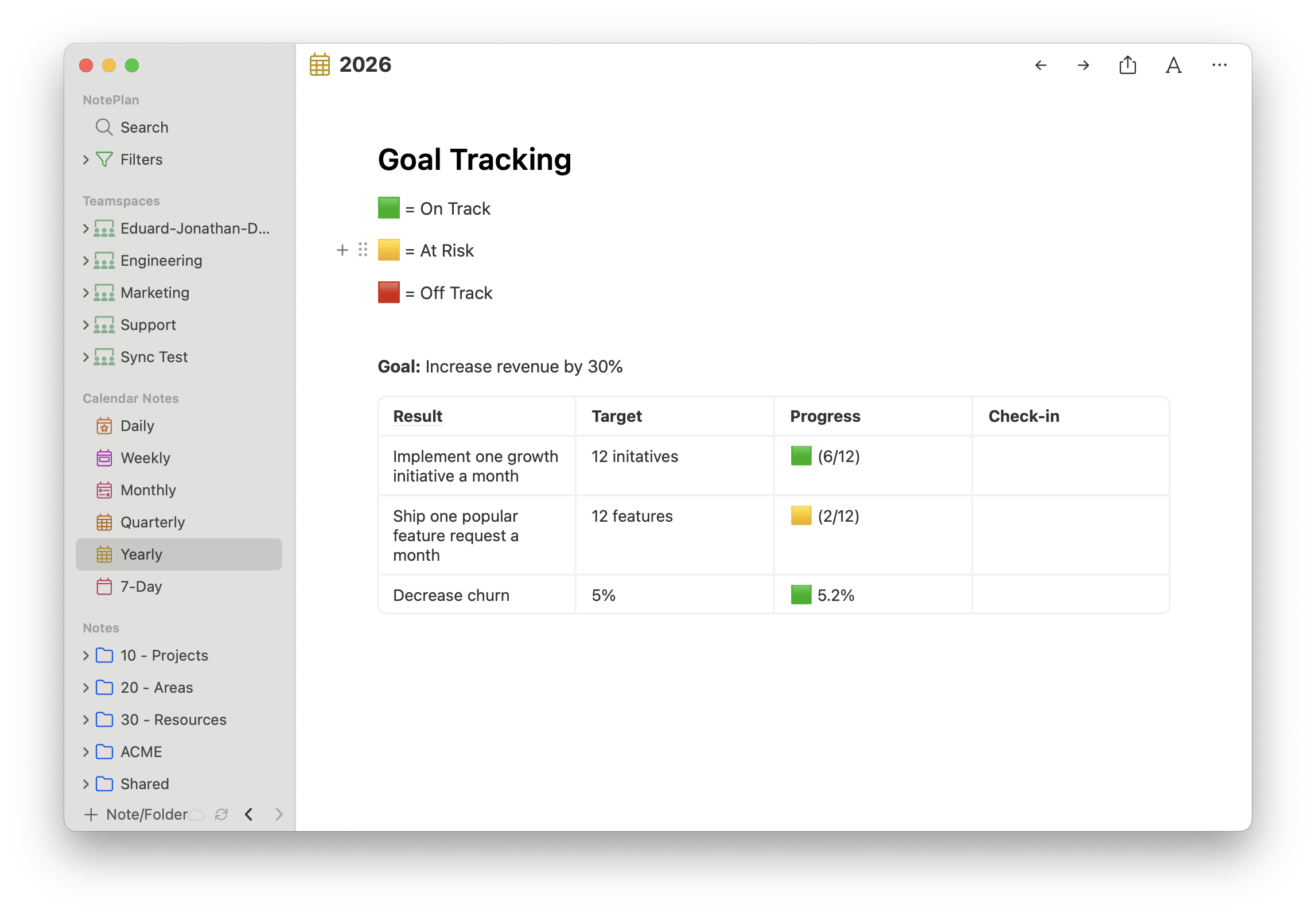SMART Goals: How To Set Goals That You'll Actually Achieve
SMART goals allow you to set goals that you'll actually achieve. Our guide covers how to set SMART goals, best practices, and tips and tricks.

Setting goals is easy. Sticking to them? That’s the hard part. Most people set vague goals like “get rich” or “lose weight”, only to fall off track within weeks. The problem isn’t you - it’s the way your goals are structured.

That’s where SMART goals come in. This proven framework helps you clarify what you want, set a timeline, and track your progress - so you’re way more likely to achieve what you set out to do.
In this guide, we will break down what SMART goals are, how to set them, and show some examples you can follow to actually make them happen.
What Are SMART Goals?
SMART is an acronym that stands for:
- Specific
- Measureable
- Achievable
- Relevant
- Time-bound
Each of these elements helps create a crystal-clear goal that’s realistic and actionable. When combined, they turn abstract wishes into results-driven plans.
Breaking Down the SMART Goal Framework
- S - Specific: Your goal should be clear and detailed, not vague. “I want to get healthy" is too broad. A much better alternative would be: “I want to walk 8,000 steps”.
- M - Measurable: You need to track your progress. Use numbers, milestones, or outcomes. “Increase sales” becomes “Increase revenue by 15% in Q2”.
- A - Achievable: Set goals that challenge you, but don’t set yourself up to fail. Consider your resources, time, and current commitments.
- R - Relevant: Your goal should align with your bigger picture. Don’t just set a goal because it sounds good - make sure it matters to you, your family, or your team.
- T - Time-bound: Deadlines drive action. Set a date. A goal without a timeline is just a wish.
Why Vague Goals Fail and SMART Goals Stick

Let’s be honest for a second. It’s easy to call people lazy or undisciplined, but the truth is, humans are complicated. We change our minds constantly, are easily distracted, and have endless worries and problems. This means that setting vague goals like “make more money” just isn’t going to work.
If you don’t even know what the criteria for success is, how will you achieve it? Do you achieve the aforementioned goal after your next paycheck? You made more money, after all.
Without details, it’s easy to put things off, shift goalposts, or forget the goal altogether.
SMART goals give us a framework that cuts through all that fog. When you define your goal in measurable terms, progress becomes visible. You know whether you’re on track or not. That tiny shift - from guesswork to clarity - makes a massive difference in how motivated you feel and how consistently you stay.
| Vague Goal | SMART Goal |
|---|---|
“I want to get fit.” | “I will work out 3 times per week for 30 minutes each, for the next 3 months.” |
“I want to save money.” | “I will save $200 each month for the next 6 months to build an emergency fund.” |
“I want to grow my business.” | “I will gain 500 new email subscribers by September 1st through targeted lead magnets.” |
“I want to read more.” | “I will read 12 books this year by reading 20 pages every weekday.” |
“I want to be more productive.” | “I will plan my daily tasks using a digital planner and complete my top 3 tasks by 1 PM each weekday for the next month.” |
How to Actually Start Using SMART Goals
So, how do you go from understanding SMART goals to actually using them? Start small. Choose one area of your life - work, fitness, relationships, whatever - and create one solid SMART goal.
Walk it through each part of the framework. Is it specific enough? Can you measure progress? Is it realistic enough given your time and energy? Does it actually matter to you? And when will you get it done?
Once you’ve got that written down, make it visible. A great way of doing this is to use a digital bullet journal/planner like NotePlan. Having your goals written down digitally means you’ll have them no matter where you go, keeping you accountable and increasing your chances of success.
It’s also important to create a system of check-ins - weekly reviews, daily habit tracking, whatever works for you - to stay on track.
The goal itself is important, but how you keep yourself accountable is really what drives success.
A Step-by-Step Guide to SMART Goals With NotePlan
Step 1: Download NotePlan
Step 2: Setup a Template
- Create sample templates by right-clicking / long-pressing the "Templates" folder in the left sidebar.
- Enable Monthly and Yearly notes (Settings > Calendar)
- Open a monthly or yearly note and insert the template "Monthly OKR Goal Tracker (Work)" or the "👟 Weekly Habit Tracker" (weekly notes needed).
Step 3: Define and Track Goals
- Define your goals or habits.
- Track them on a daily basis.
Conclusion
Vague intentions rarely lead to real change. With the SMART goals method, you bring structure. intention , and momentum to your ambitions. This framework helps you stay accountable, whether it be personal, academic, or professional goals.
Start small, track consistently, and don’t be afraid to revise as you go. SMART goals aren’t about perfection - they’re about progress.
Frequently Asked Questions (FAQs)
What are the 5 SMART Goals?
SMART goals are composed of 5 key elements: Specific, Measurable, Achievable, Relevant, and Time-bound. This framework makes goals easier to track and realistic.
What is an Example of a SMART Goal?
An example of a SMART goal would be: “Lose 5 pounds by October 31st by going in a 500-calorie deficit and going jogging on Tuesdays and Thursdays”.
How do You Write a SMART Goal?
To write a SMART goal, you first need to identify a goal that is extremely specific and measurable. After that, set a time frame for your goal.
Can one app really replace your entire productivity stack?
NotePlan did. Try NotePlan free for 7 days to learn how